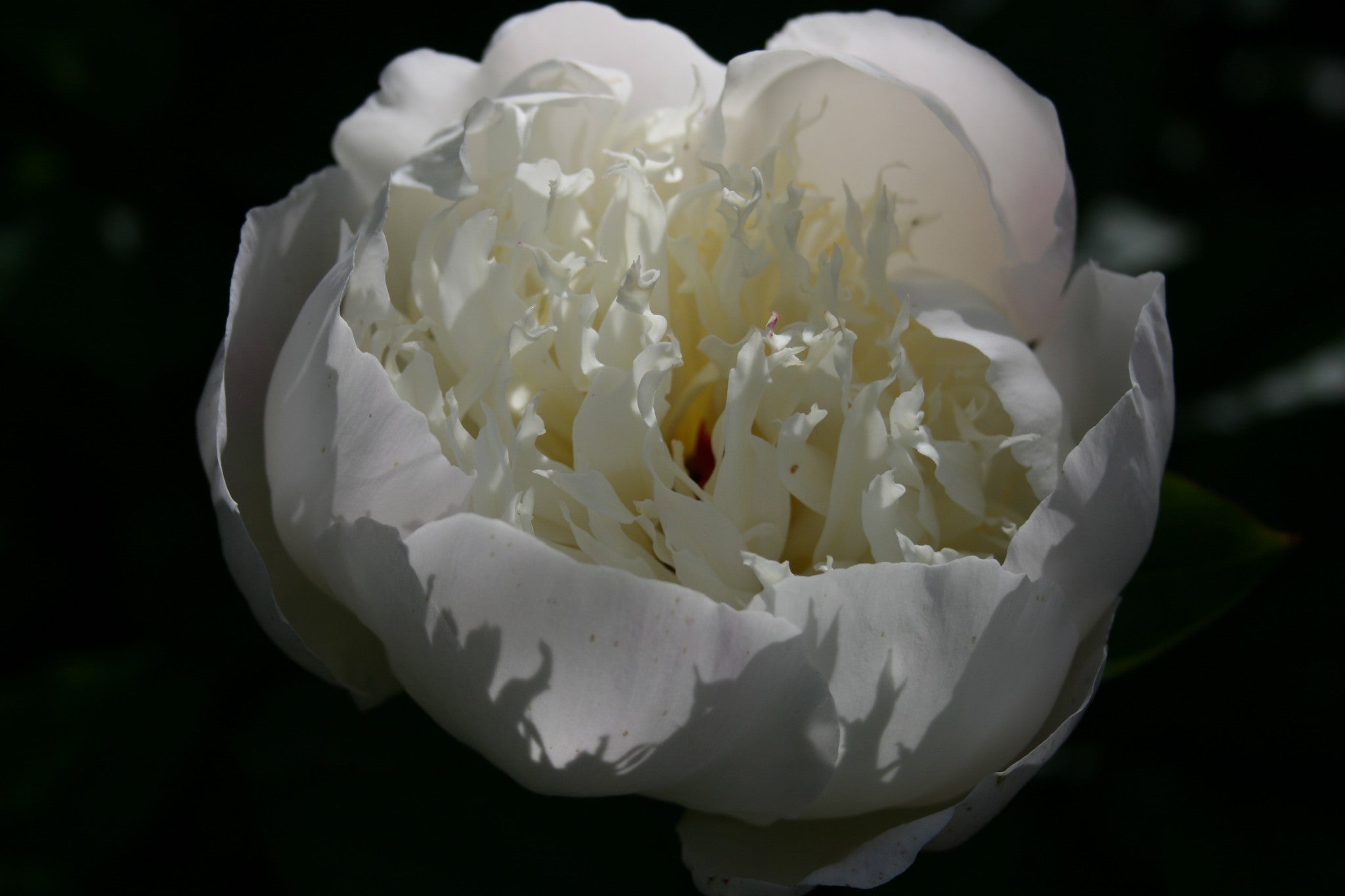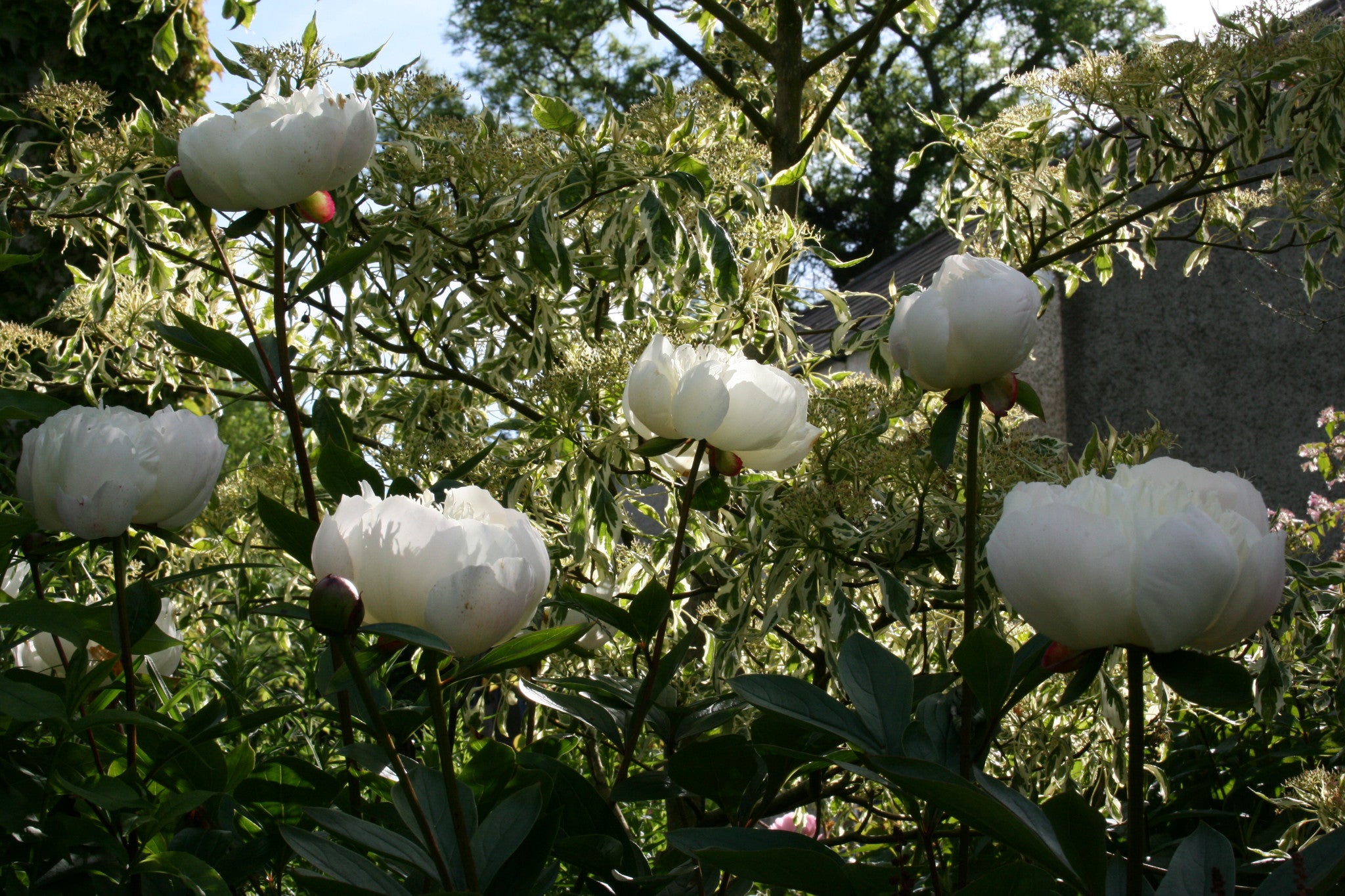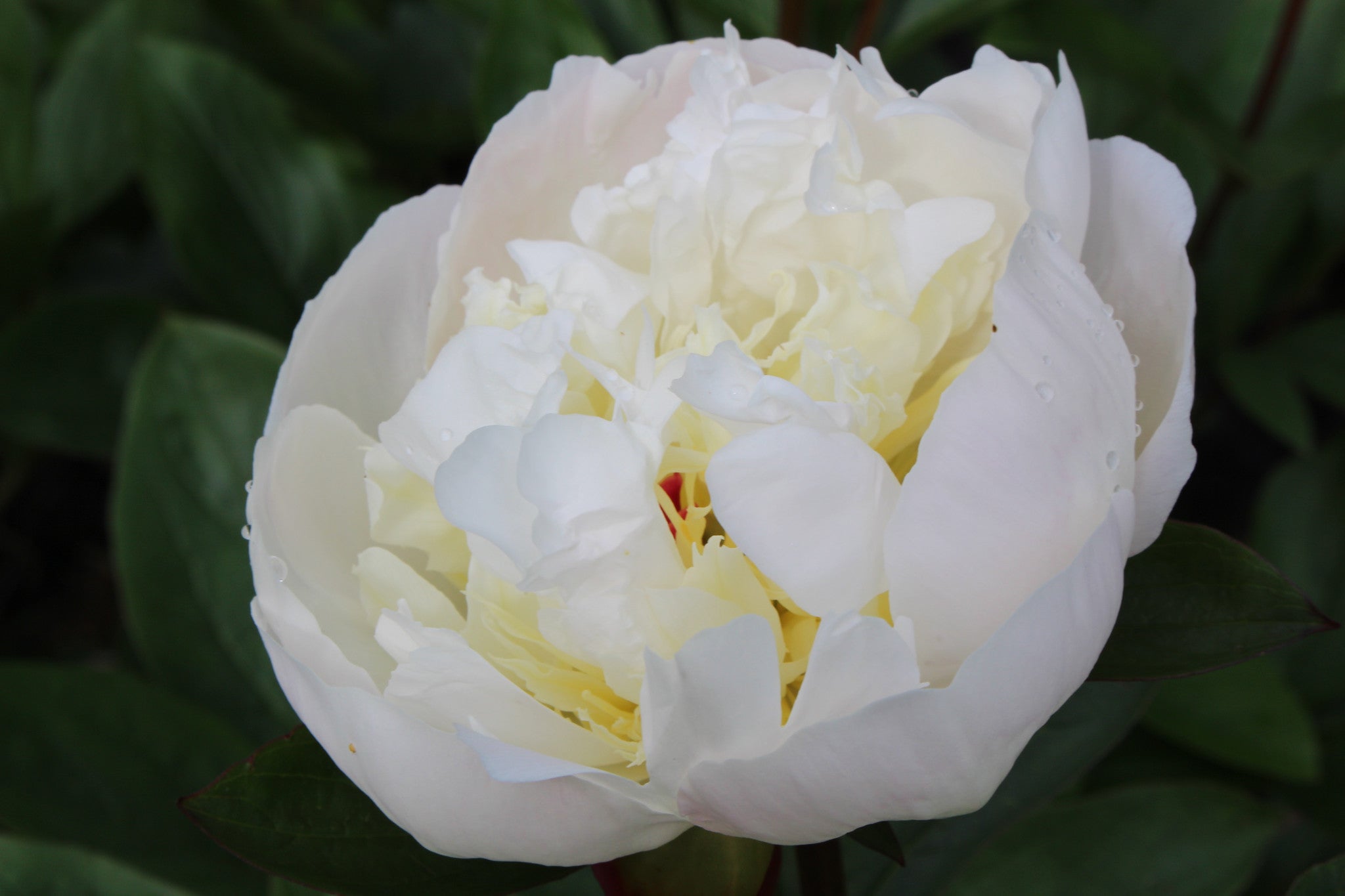Paeonia lactiflora 'Immaculée'
Approx. 0.5 litre pot
About this cultivar:
Paeonia lactiflora 'Immaculée' is a 1953 intoduction. Big, bowl-shaped, semi-double, white flowers that have a good scent, are produced in early summer above the rich green foliage. The flowers last well on the plant, and also make good additions to cut arrangements.
- Position: Full sun, partial shade
- Soil: Almost any soil, grows well in Ballyrobert
- Flowers: May, June
- Other features: -
- Hardiness: Fully hardy, grows well in Ballyrobert
- Habit: Clump forming
- Foliage: Deciduous
- Height: 90 - 120 cm (3 - 4 ft)
- Spread: 60 - 90 cm (2 - 3 ft)
- Time to full growth: 2 to 5 years
- Plant type: Herbaceous Perennial
- Colour: Green, white
- Goes well with: --
About this genus:
Paeonia (pe-o-ne-a), commonly known as peony, is the only genus in the family Paeoniaceae. They are native to Asia, Southern Europe and Western North America. Estimates of the number of species range from 25 to 40. Most are herbaceous perennial plants but some resemble trees up to 10 feet tall. They have compound, deeply lobed leaves and large, often fragrant, flowers, ranging from red to white or yellow, in late spring and early summer.
The peony is named after Paeon (also spelled Paean), a student of Asclepius, the Greek god of medicine and healing. Asclepius became jealous of his pupil; Zeus saved Paeon from the wrath of Asclepius by turning him into the peony flower. More dryly, the scientific name Paeoniaceae was first used by Friedrich K.L. Rudolphi in 1830.
Interestingly over 262 compounds have been obtained so far from the plants of Paeoniaceae. These include monoterpenoid glucosides, flavonoids, tannins, stilbenoids, triterpenoids and steroids, paeonols, phenols, and a partridge in a a pear tree. Thus, as you can imagine, the Paeonia has many uses outside the ornamental; antioxidant, antitumor, antipathogenic, immune-system-modulation, cardiovascular-system-protective, and central-nervous-system-protective. No surprise then Paeonia has been used frequently in traditional medicines of Korea, China and Japan. What can you and I do with them then? Well, the petals may be added to salads or to punches and lemonades (I'm sure you can manage that!).
The peony is among the longest-cultivated flowers in Eastern culture. The ancient Chinese city Luoyang has a reputation as a cultivation centre for the peonies, dozens of peony exhibitions and shows are still held there annually. In Japan Paeonia suffruticosa is called the King of Flowers and Paeonia lactiflora is called the Prime Minister of Flowers. Is that really a compliment!?!?
In the Middle Ages european superstition dictated that great care be taken not to be seen by a woodpecker while picking Paeonia fruit, or the bird might peck out one's eyes. More recently, famous painters of peonies have included Conrad Gessner (ca. 1550) and Auguste Renoir in 1879. I could go on and on, but I'll leave it up to you to visit Wikipedia!
In the garden Peonia are easy to grow...full-sun to part-shade, almost any soil that isn't waterlogged, and some moisture are they keys. Peonies are great pass-along plants...after a few years, your clump will be large enough to divide and share with friends. Some Paeonia may need staking because the flowers get so big they want to droop. We rarely bother - just grow them next to a hedge so they only droop in one direction, opening like three dimensional fan!










